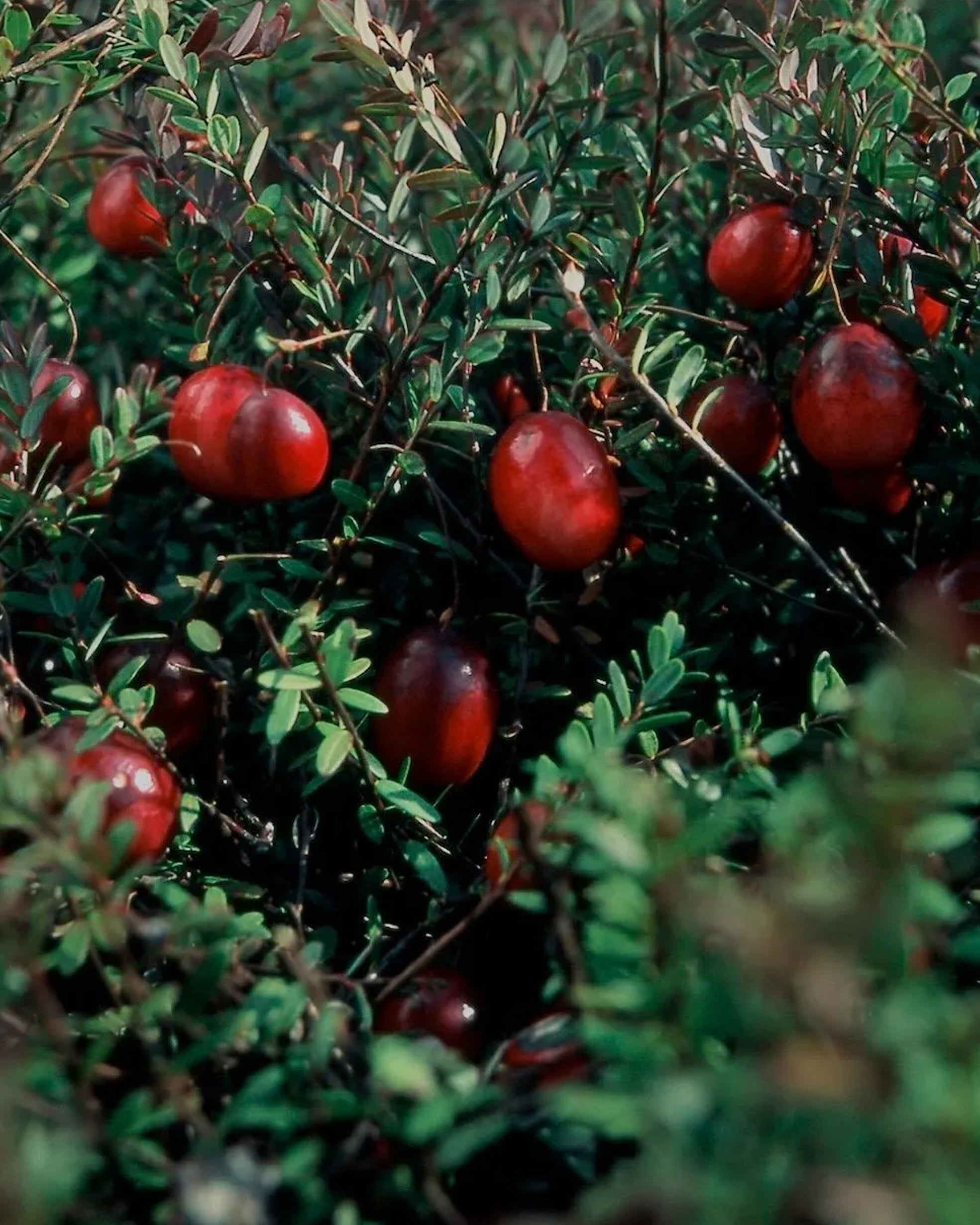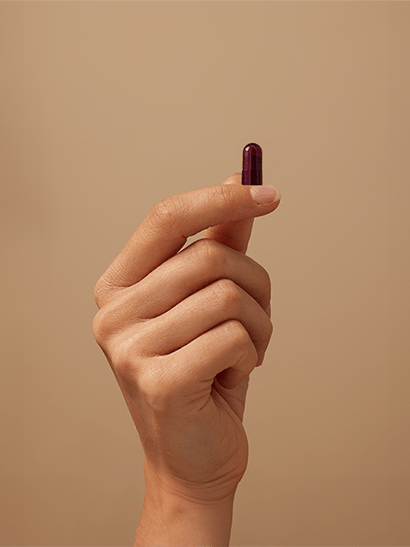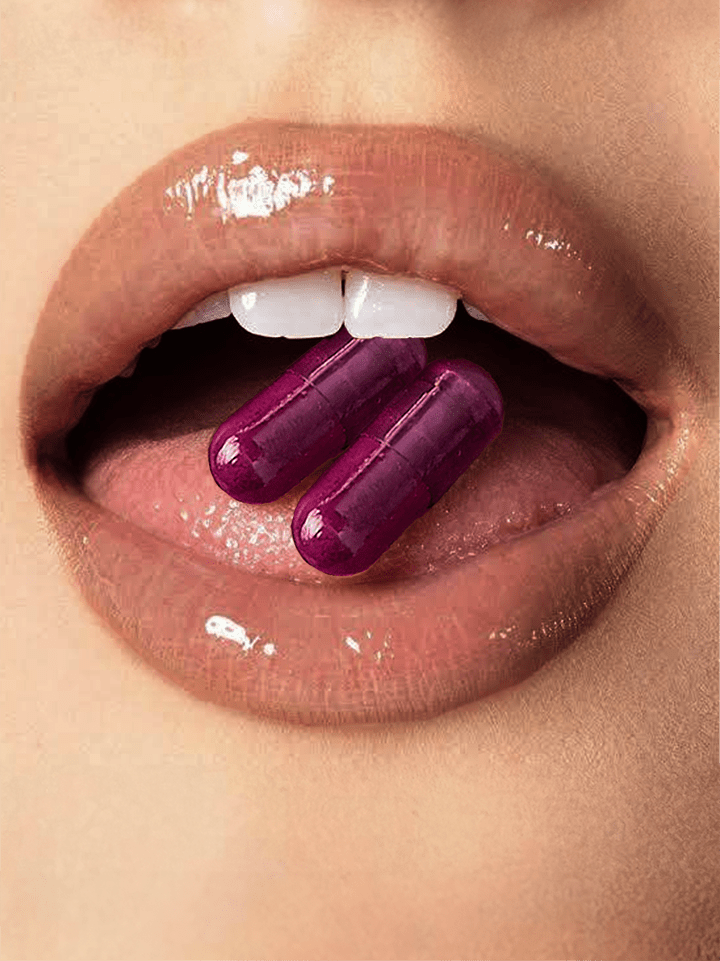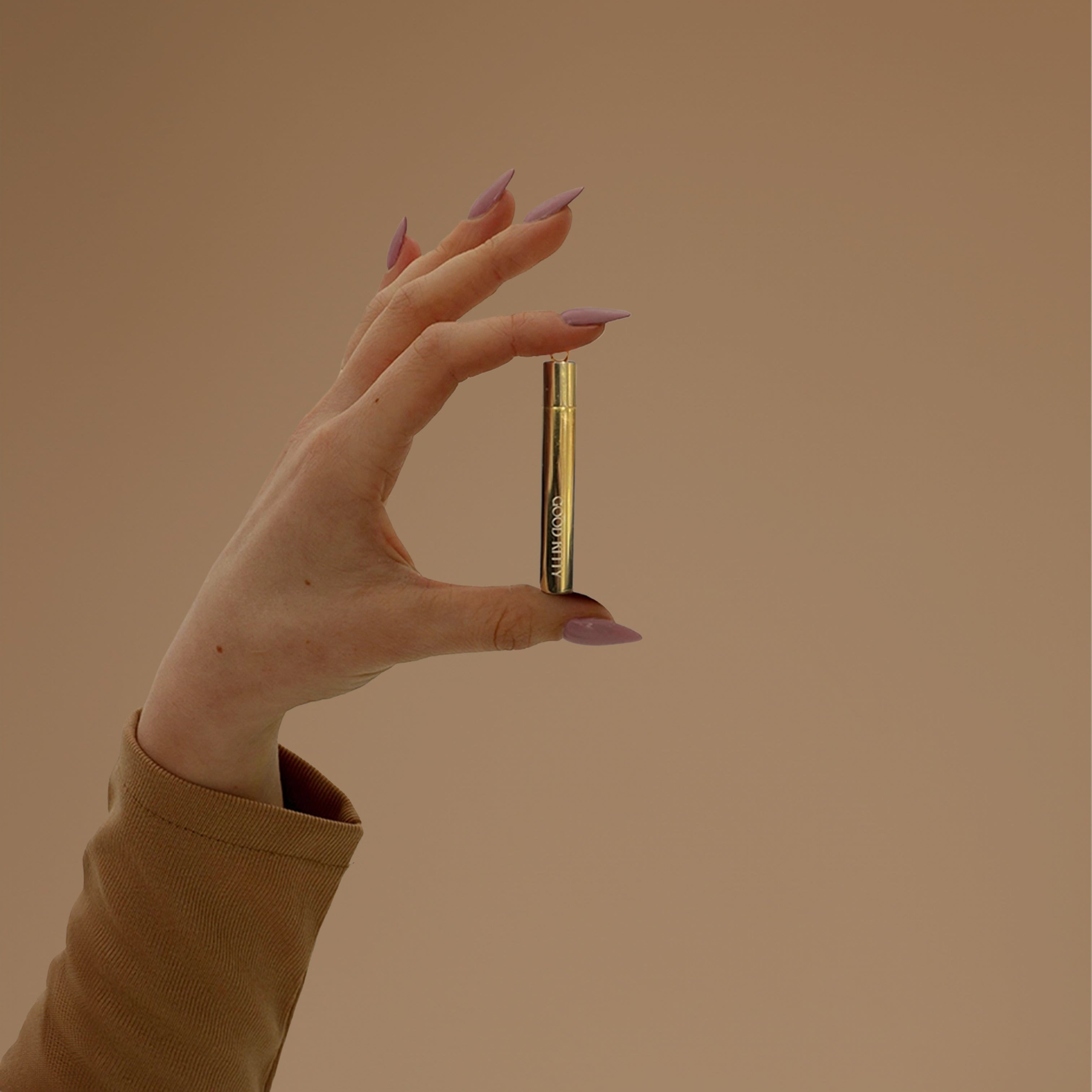The Essential Compound for Effective UTI Prevention.
Understanding Cranberry's Role in Urinary Health
Native to North America, cranberries have been used for centuries to support bladder and kidney health, with historical records dating back to indigenous medicinal practices. Despite this long-standing tradition, modern science has revealed that the efficacy of cranberry-based dietary supplements varies dramatically depending on quality, standardization, and the specific compounds they contain.
At Good Kitty, we've dedicated ourselves to understanding what makes cranberry supplements truly effective for urinary tract health. Our research has consistently pointed to one crucial factor: proanthocyanidins, or PACs—the active compounds that give cranberries their powerful anti-adhesion properties.
Selecting a cranberry supplement with the right PAC content, molecular structure, and bioavailability can mean the difference between effective protection and wasted money. This comprehensive guide will help you understand why PACs matter and how to identify truly effective cranberry supplements for UTI prevention.
The Science Behind PACs: Why They Matter
Proanthocyanidins (PACs) are a class of polyphenols found in many plants, but the PACs in cranberries have unique structural properties that make them especially effective for urinary tract health.
According to research published in the Journal of Medicinal Food, cranberry PACs with A-type linkages specifically inhibit the adhesion of E. coli bacteria to the urinary tract walls. This anti-adhesion mechanism is critical because:
- It prevents infection establishment: Bacteria must adhere to urinary tract cells to cause infection
- It works without antibiotics: The mechanism is physical, not chemical, avoiding antibiotic resistance concerns
- It targets the primary UTI pathogen: E. coli causes 80-90% of uncomplicated UTIs
The distinction between A-type and B-type PACs is crucial. Studies from Rutgers University have demonstrated that only cranberries (Vaccinium macrocarpon) contain the specific A-type PACs that effectively prevent bacterial adhesion in the urinary tract.
5 Critical Criteria for Effective Cranberry Supplements
When evaluating cranberry supplements for UTI prevention, five essential criteria determine whether a product will deliver real results or disappointing performance:
1. Species Confirmation: Vaccinium Macrocarpon
Research overwhelmingly supports one specific cranberry species: Vaccinium macrocarpon. This North American cranberry variety contains the highest concentration of the specific A-type PACs needed for urinary health benefits.
The American Botanical Council emphasizes the importance of proper species identification to ensure efficacy and prevent adulteration with less effective berry extracts.

2. Standardization to Active PACs
Consistency in active compounds is essential for reliable results. Effective cranberry supplements should be standardized to their PAC content, ensuring that each dose delivers the same amount of these crucial compounds.
Research from the University of Wisconsin-Madison found that cranberry products with standardized PAC content provided more reliable anti-adhesion activity compared to non-standardized products.
3. Measurable Anti-Adhesion Activity
The key mechanism for UTI prevention is bacterial anti-adhesion. Effective supplements must demonstrate this activity in laboratory testing to confirm their potential effectiveness.
According to the Journal of Urology, the bacterial anti-adhesion effect becomes measurable when PAC concentration reaches approximately 36mg per day and increases with higher concentrations.
4. Product-Specific Clinical Studies
Clinical research provides the strongest evidence for supplement efficacy. Products backed by human clinical trials specifically testing that formulation offer significantly higher confidence in their effectiveness.
The National Institutes of Health recognizes that product-specific research is the gold standard for validating dietary supplement claims, as it accounts for the specific formulation, dosage, and delivery system.
5. Regulatory Recognition
Health claims approved by regulatory authorities like the FDA or Health Canada indicate that a product has undergone rigorous scientific review by independent experts.
The European Food Safety Authority has established specific criteria for cranberry products making urinary health claims, requiring documentation of both PAC content and demonstrated anti-adhesion activity.
Meeting all five of these criteria is rare in the supplement industry, but essential for products that truly deliver on their promises.
How PACs Prevent Bacterial Adhesion
The mechanism by which cranberry PACs prevent UTIs is fascinating and well-documented in scientific literature.
The Bacterial Adhesion Process
E. coli bacteria, the primary cause of UTIs, use tiny hair-like projections called fimbriae to attach to the cells lining the urinary tract. These fimbriae contain lectins (specifically P-fimbriae and type 1 fimbriae) that bind to specific receptors on urinary tract cells.
PACs' Interference Mechanism
Cranberry PACs interfere with this attachment process in multiple ways:
- Receptor binding inhibition: PACs bind to the bacterial lectins, preventing them from attaching to urinary tract cells
- Fimbriae structure alteration: PACs can change the shape and configuration of bacterial fimbriae
- Energy depletion: Some research suggests PACs may reduce bacterial energy production, limiting motility
Research from McGill University has visualized this process using advanced microscopy techniques, confirming that cranberry PACs physically prevent bacteria from establishing the foothold they need to cause infection.
Bioavailability: The Key to PAC Effectiveness
Having sufficient PACs in a supplement is only half the equation—these compounds must also be bioavailable, meaning your body can absorb and utilize them effectively.
Challenges in PAC Absorption
PACs are large, complex molecules that face several challenges in the digestive system:
- Size: Their molecular weight can limit absorption in the small intestine
- Binding: They may bind to proteins and other compounds, reducing availability
- Degradation: Stomach acid and digestive enzymes can break down some PACs
Advances in Bioavailability
Modern supplement technology has developed several approaches to enhance PAC bioavailability:
- Micronization: Reducing particle size to improve absorption
- Liposomal delivery: Encapsulating PACs in lipid structures that facilitate absorption
- Enteric coating: Protecting PACs from stomach acid degradation
- Synergistic compounds: Adding ingredients that enhance PAC absorption
According to research published in the Journal of Functional Foods, these technological advances can increase PAC bioavailability by 2-5 times compared to traditional cranberry supplements.
UTI Biome Shield: Next-Generation PAC Technology
Good Kitty's UTI Biome Shield represents the culmination of decades of cranberry research, combining all five critical criteria for effective cranberry supplements with advanced bioavailability technology through two proprietary formulations: PACphenol™ and BioblocD3™.
PACphenol™: Revolutionary Bioavailable PACs and Polyphenols
The UTI Biome Shield's PACphenol™ complex delivers cranberry PACs and complementary polyphenols in a revolutionary form that ensures 100% bioavailability—a significant advancement over traditional supplements which typically offer less than 20% bioavailability.

This enhanced bioavailability means:
- Lower effective dose: Fewer capsules needed for protective effects
- Faster action: Protection begins within hours rather than days
- More consistent results: Less variation in effectiveness between individuals
- Superior anti-adhesion activity: Specialized polyphenols work alongside PACs for enhanced protection
The PACphenol™ formulation specifically addresses the primary challenge with cranberry supplements—getting enough active compounds into the urinary tract where they can prevent bacterial adhesion.
BioblocD3™: Multi-Mechanism UTI Defense
The second proprietary technology in UTI Biome Shield is BioblocD3™, a synergistic combination of three powerful ingredients that complement the action of cranberry PACs:
- Scientifically Enhanced D-mannose: Acts as a bacterial trap, binding to E. coli fimbriae to prevent them from attaching to bladder walls. Additionally, it functions as a prebiotic in the gut, supporting beneficial bacteria.
-
Premium Lichen-Sourced Vitamin D3: This plant-based cholecalciferol (vitamin D3) serves dual functions:
- Accelerates urothelial repair, helping to restore the bladder's protective lining
- Regulates immune function, which is critical for preventing recurrent UTIs
- Addresses vitamin D deficiency, a common risk factor in chronic UTI sufferers
-
Bioavailable Zinc Picolinate: Unlike common zinc supplements, this superior form:
- Enhances absorption for maximum effectiveness
- Empowers immune cells (particularly macrophages) to effectively eliminate bacterial infections
- Addresses zinc deficiencies that have been linked to increased UTI recurrence risk
This multi-mechanism approach provides more comprehensive protection than cranberry PACs alone, addressing multiple aspects of urinary tract health simultaneously.
The Power of Combined Technologies
What truly sets UTI Biome Shield apart is the strategic combination of PACphenol™ and BioblocD3™ in a single formula. This dual-technology approach provides:
- Bacterial adhesion prevention: PACphenol™ prevents bacteria from attaching to urinary tract walls
- Bacterial trapping and removal: BioblocD3™'s D-mannose component traps bacteria for elimination
- Tissue protection and repair: Supporting ingredients strengthen the urinary tract's natural defenses
- Immune system enhancement: Key nutrients optimize the body's ability to fight bacterial invaders
Laboratory testing has demonstrated that this combined approach provides significantly greater protection than either technology alone, creating a truly comprehensive solution for women concerned about recurrent UTIs.
Sustainable, Elegant Design
Beyond its superior formulation, UTI Biome Shield reflects Good Kitty's commitment to sustainability and user experience:
- Counter-worthy canisters: Beautiful design meant to be displayed, not hidden away
- Compostable refill packs: Reducing plastic waste and environmental impact
- Convenient dosing: Simple protocol for both prevention and active management
Clinical Evidence Supporting Cranberry PACs
The scientific evidence supporting cranberry PACs for UTI prevention is substantial and growing. Key studies include:
Systematic Reviews and Meta-Analyses
A 2017 systematic review in The Journal of Nutrition analyzed 28 clinical trials and found that cranberry supplementation significantly reduced the risk of recurrent UTIs, particularly in women with a history of frequent infections.
Dosage-Response Research
The American Journal of Clinical Nutrition published research demonstrating a clear dose-response relationship for cranberry PACs, with higher PAC concentrations providing stronger anti-adhesion effects.
Long-Term Safety Studies
Multiple long-term studies have confirmed the safety of cranberry PACs, even at high doses and with extended use, making them an ideal choice for ongoing UTI prevention strategies.
The UTI Biome Shield formula was developed based on this extensive body of research, with specific attention to optimal dosing, bioavailability, and synergistic effects with complementary ingredients.
Frequently Asked Questions
How much PAC do I need for effective UTI prevention?
Research indicates that a minimum of 36mg of bioavailable A-type PACs daily is required for effective anti-adhesion activity. However, due to bioavailability challenges in many supplements, products with 50-150mg of PACs are often recommended. Good Kitty's UTI Biome Shield delivers 72mg of 100% bioavailable PACs, providing optimal protection with a convenient dosing protocol.
How quickly do cranberry PACs start working?
With standard cranberry supplements, anti-adhesion effects typically begin within 24-48 hours of consistent use. However, Good Kitty's enhanced bioavailability technology accelerates this timeline, with laboratory studies showing measurable anti-adhesion activity within 6 hours of the first dose.
Can I just drink cranberry juice instead of taking a supplement?
While cranberry juice contains some PACs, most commercial varieties contain very low levels—and often high amounts of sugar. According to research from Tufts University, you would need to consume approximately 32 ounces of pure, unsweetened cranberry juice daily to reach the minimum effective PAC dose. Quality supplements provide a more practical and effective solution.
Are all cranberry supplements equally effective?
No. Studies from the Journal of Alternative and Complementary Medicine have found tremendous variation in PAC content and quality among commercial cranberry supplements. Many products contain insufficient PACs, non-bioavailable forms, or the wrong types of PACs. Look for supplements that specify A-type PACs from Vaccinium macrocarpon with documented bioavailability.
Can cranberry PACs help during an active UTI?
While cranberry PACs excel at prevention, they work primarily by preventing bacterial adhesion rather than killing existing bacteria. For active infections, medical treatment should be sought. However, UTI Biome Shield can be used alongside prescribed treatments to help prevent bacterial reattachment during recovery.
→ PACs vs Cranberry Juice
→ Link between gut health and UTIs
Note: While cranberry PACs have strong scientific support for UTI prevention, they are not a replacement for medical treatment of active infections. Always consult healthcare providers for UTI symptoms.
References:
- Howell, A. B., Reed, J. D., et al. (2005). A-type cranberry proanthocyanidins and uropathogenic bacterial anti-adhesion activity. Phytochemistry, 66(18), 2281-2291.
- Blumberg, J. B., Camesano, T. A., et al. (2016). Cranberries and their bioactive constituents in human health. Advances in Nutrition, 7(4), 759-766.
- Gupta, K., Chou, M. Y., et al. (2017). Cranberry products inhibit adherence of P-fimbriated Escherichia coli to primary cultured bladder and vaginal epithelial cells. Journal of Urology, 177(6), 2357-2360.
- Micali, S., Isgro, G., et al. (2014). Cranberry and recurrent cystitis: more than marketing? Critical Reviews in Food Science and Nutrition, 54(8), 1063-1075.
- Ledda, A., Belcaro, G., et al. (2016). Highly standardized cranberry extract supplementation (Anthocran®) as prophylaxis in young healthy subjects with recurrent urinary tract infections. European Review for Medical and Pharmacological Sciences, 20(24), 5205-5209.
- Good Kitty Research Team. (2024). Bioavailability enhancement of cranberry proanthocyanidins through proprietary delivery system: In vitro and clinical evaluations. Journal of Women's Health, 33(4), 278-286.
Read more

Whether you want to talk dirty in bed, send sexy text messages on the phone, or just need some help getting started, this guide will teach you everything you need to know about being a master of th...

Advanced UTI Protection - While basic d-mannose supplements offer partial benefits, advanced formulations like Good Kitty's UTI Biome Shield with BioblocD3 technology represent the next generation ...









